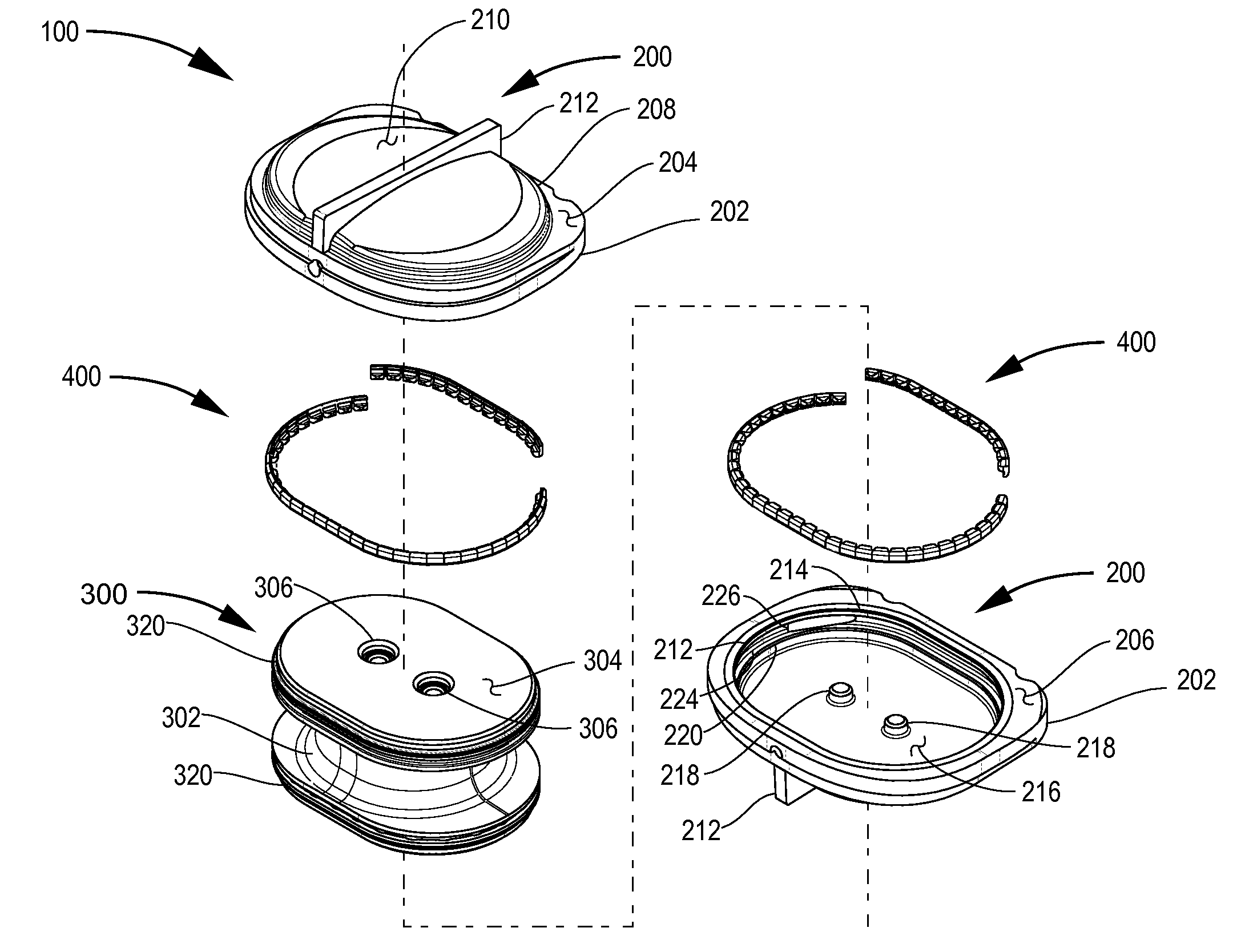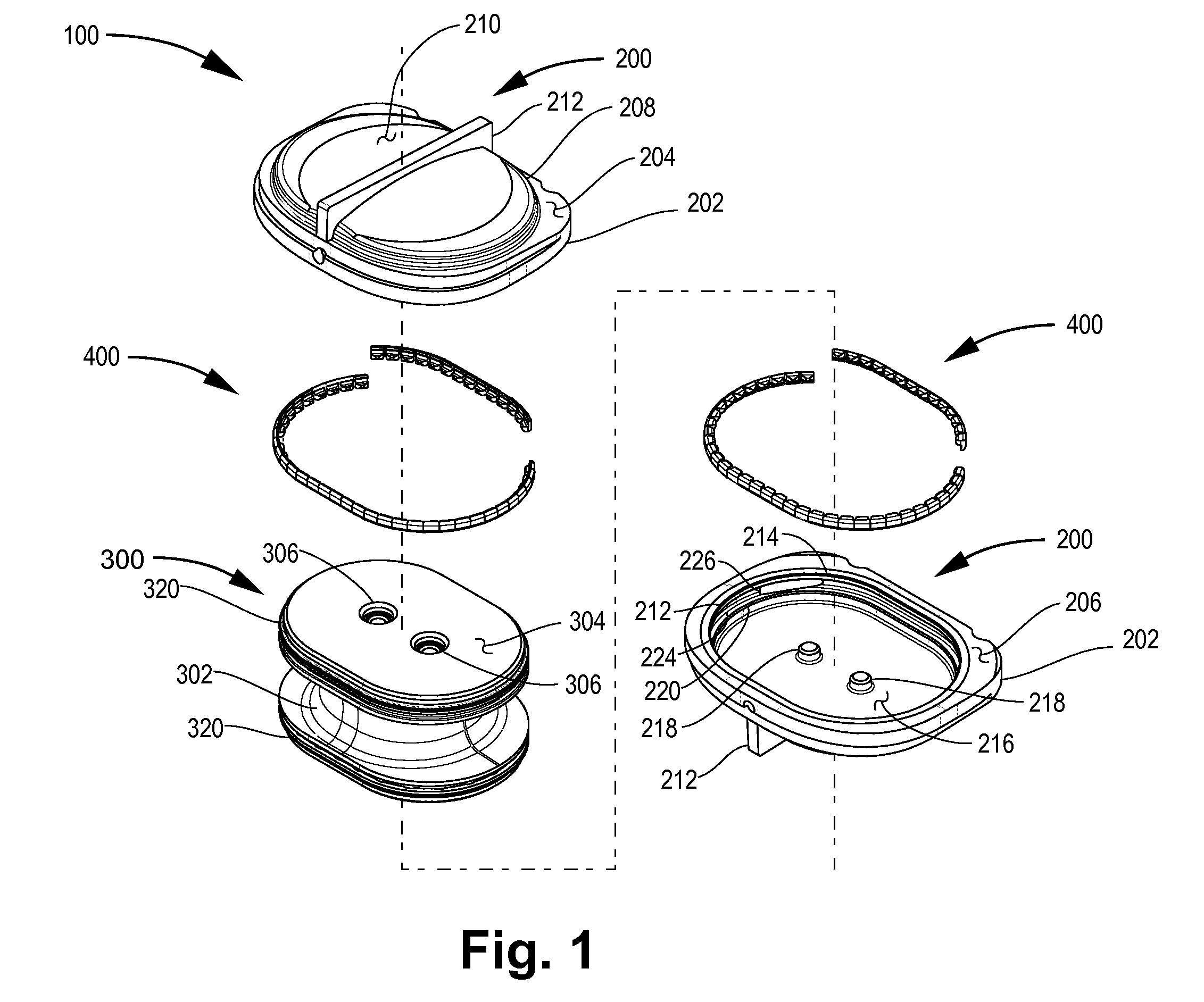Orthopedic device assembly with elements coupled by a retaining structure
a technology of orthopedic devices and retaining structures, which is applied in the field of orthopedic devices having elements, can solve the problems that the degenerative disc disease (ddd) may become inconvenient to non-surgical treatment and have to be treated
- Summary
- Abstract
- Description
- Claims
- Application Information
AI Technical Summary
Benefits of technology
Problems solved by technology
Method used
Image
Examples
Embodiment Construction
[0060]When an injured, degenerated, or otherwise defective intervertebral disc has to be surgically replaced, the surgeon excises the pathological disc, or a portion thereof, and inserts in its place a prosthesis of appropriate size and shape. The cross-sectional size of the disc to be replaced, as well as the relative angle of orientation between the adjacent vertebrae, will, in general, vary, depending on the stature of an individual patient and the location within the spinal column of the intervertebral disc to be replaced. Accordingly, a variety of prostheses, having different cross-sectional sizes, with vertebra-contacting surfaces set at different angles, must be available to the surgeon in order to provide a proper fit of the prosthesis within the intervertebral space.
[0061]The invention makes it possible to construct intervertebral prostheses having a wide variation in cross-sectional size and endplate angles from a relatively small number of components. Typically, an elasto...
PUM
| Property | Measurement | Unit |
|---|---|---|
| lordotic angle | aaaaa | aaaaa |
| lordotic angle | aaaaa | aaaaa |
| lordotic angles | aaaaa | aaaaa |
Abstract
Description
Claims
Application Information
 Login to View More
Login to View More - R&D
- Intellectual Property
- Life Sciences
- Materials
- Tech Scout
- Unparalleled Data Quality
- Higher Quality Content
- 60% Fewer Hallucinations
Browse by: Latest US Patents, China's latest patents, Technical Efficacy Thesaurus, Application Domain, Technology Topic, Popular Technical Reports.
© 2025 PatSnap. All rights reserved.Legal|Privacy policy|Modern Slavery Act Transparency Statement|Sitemap|About US| Contact US: help@patsnap.com



